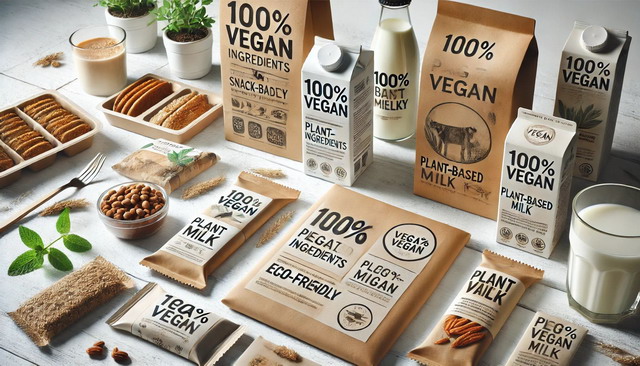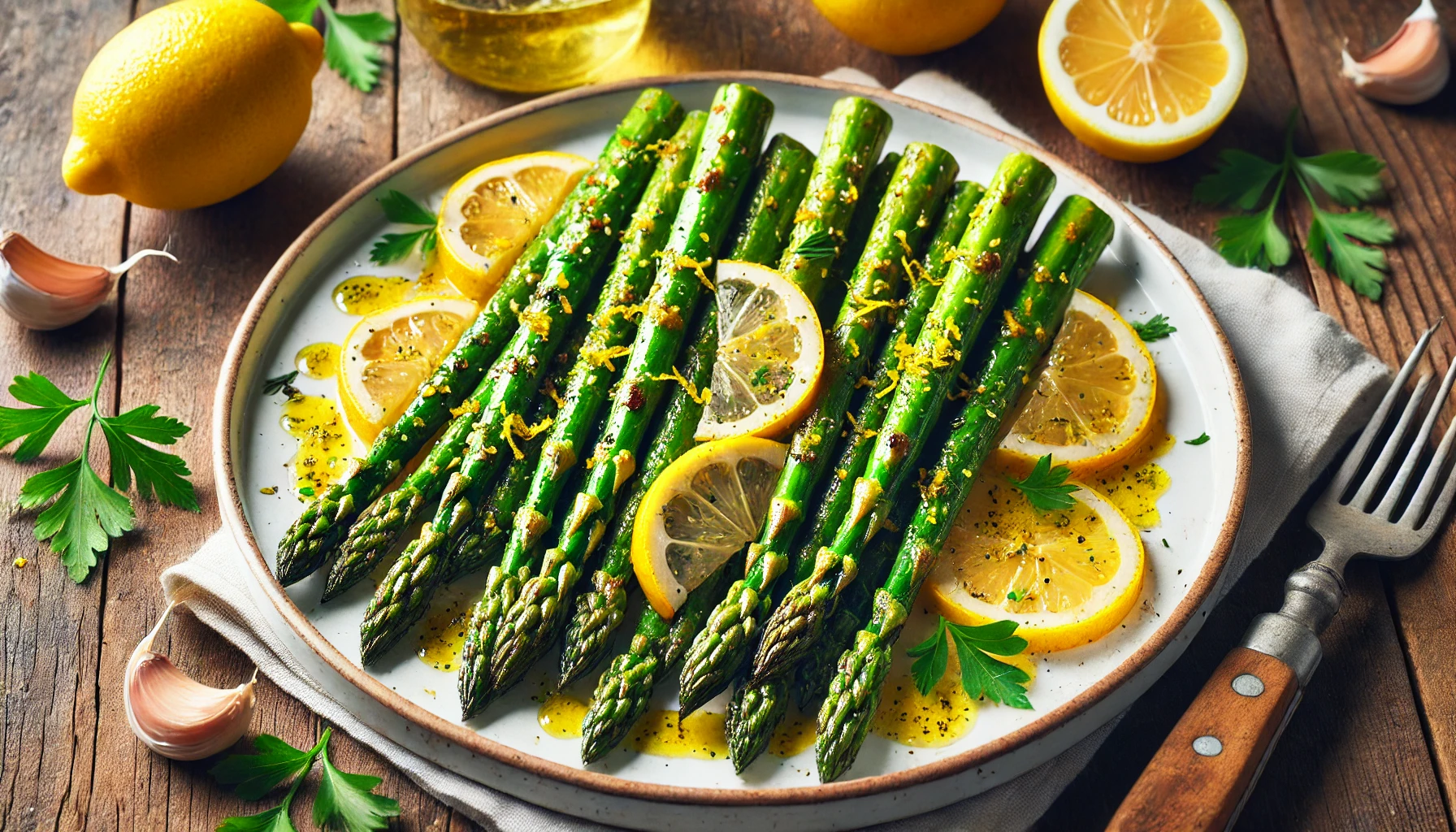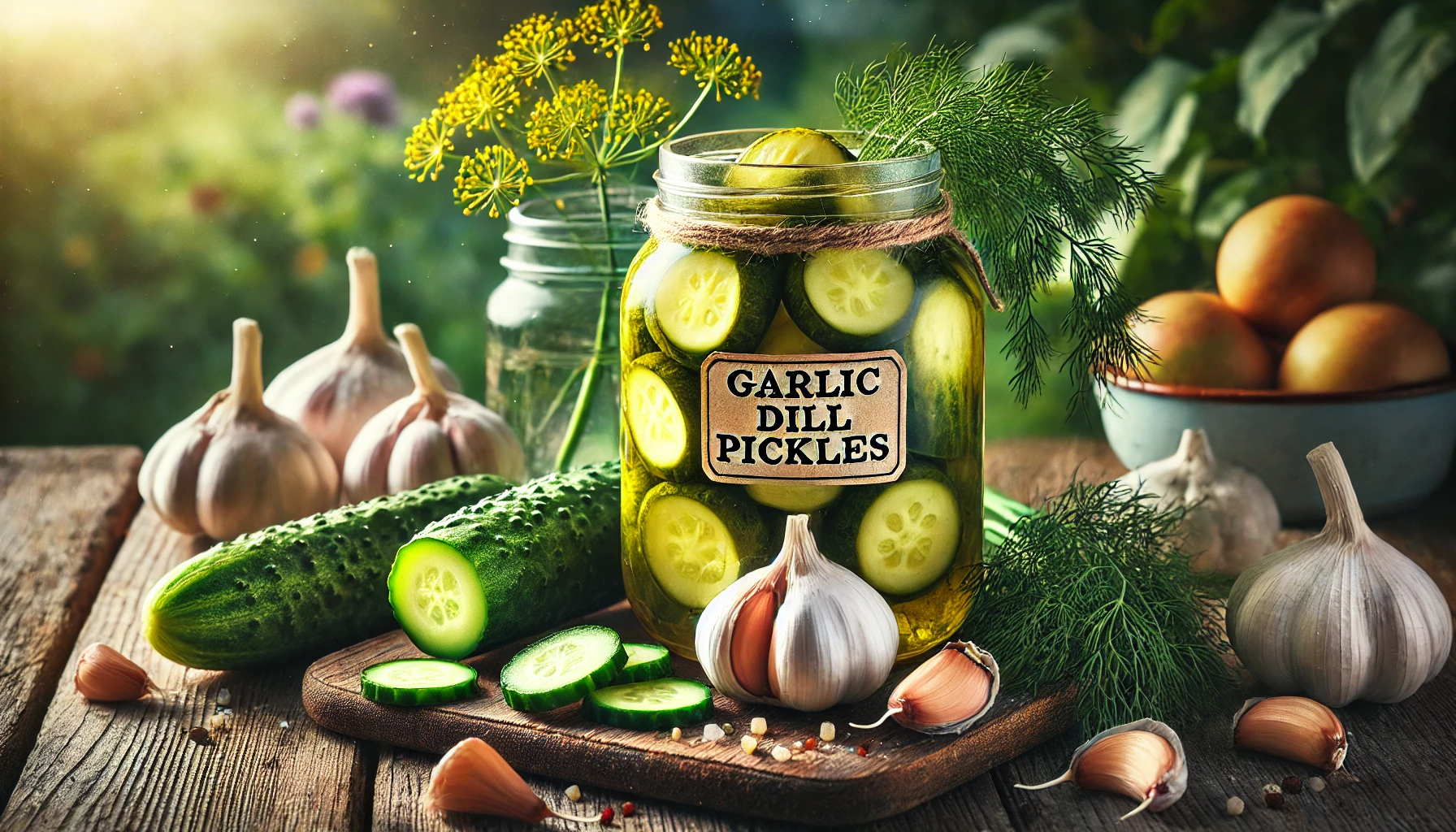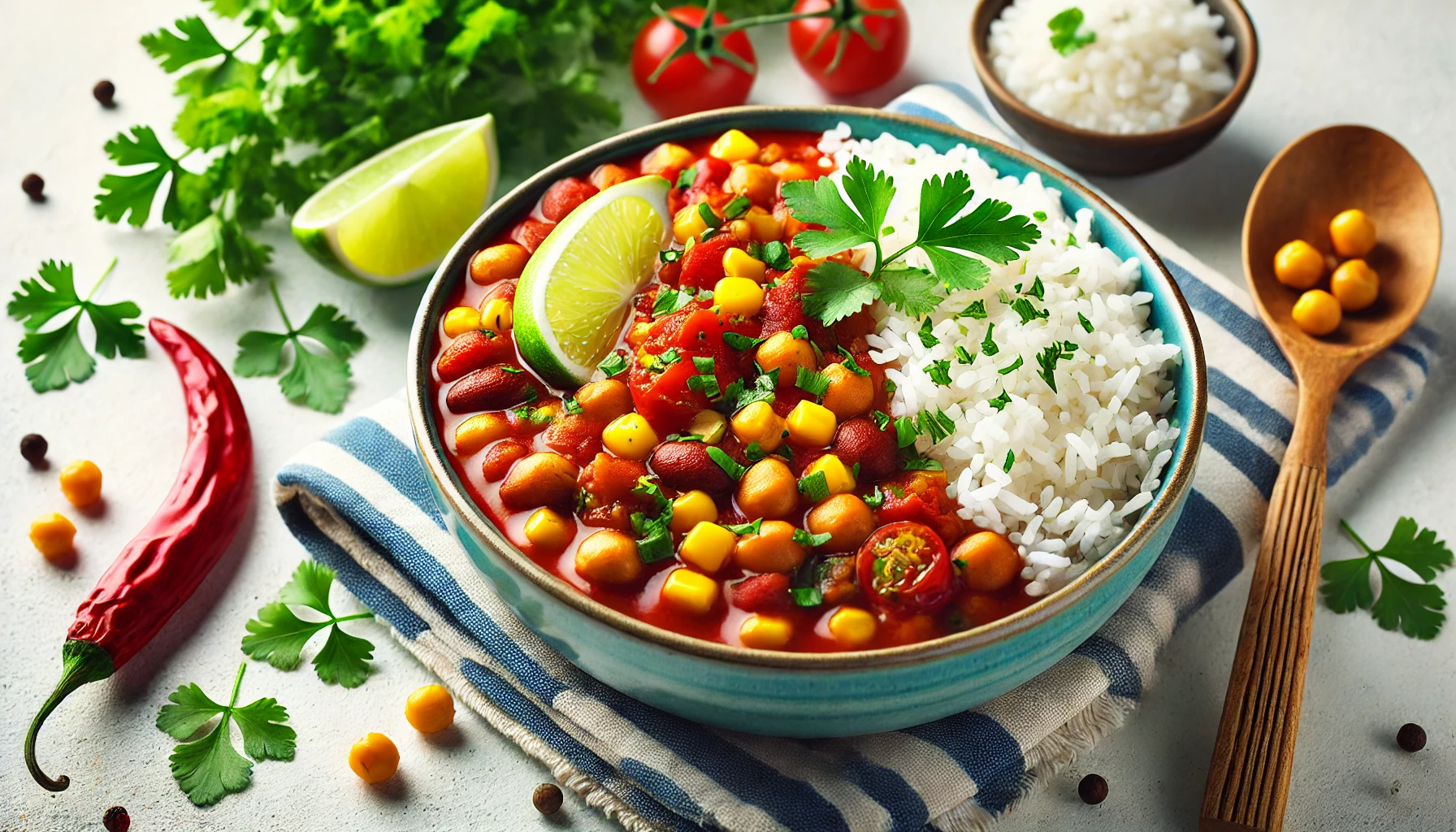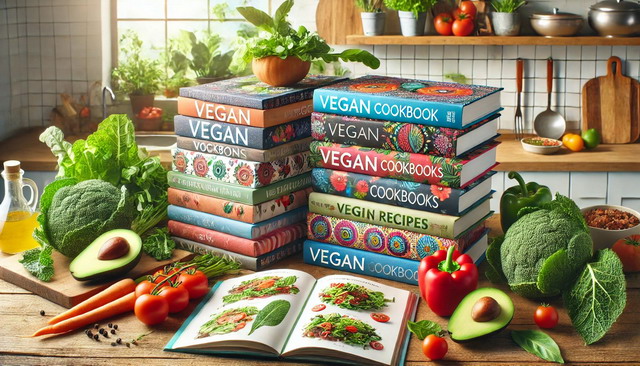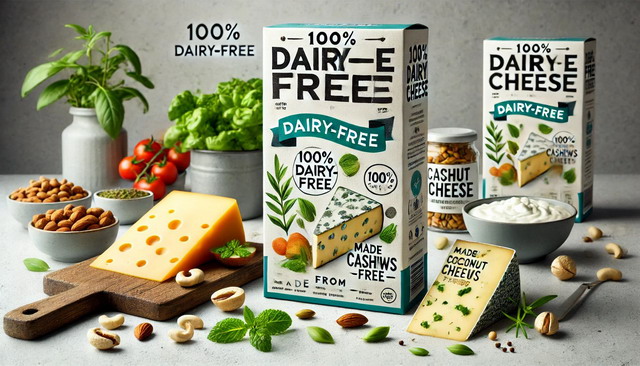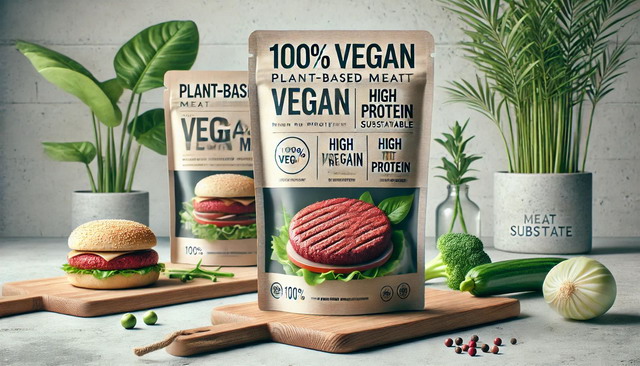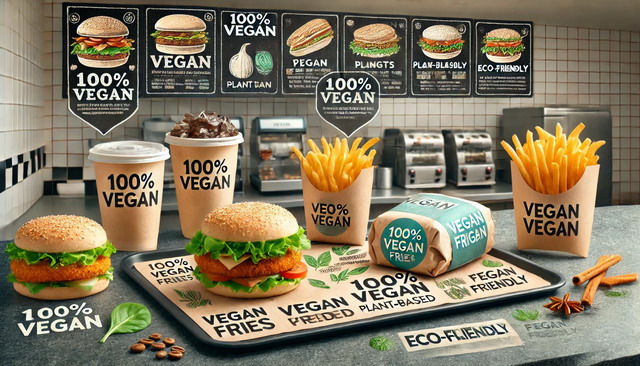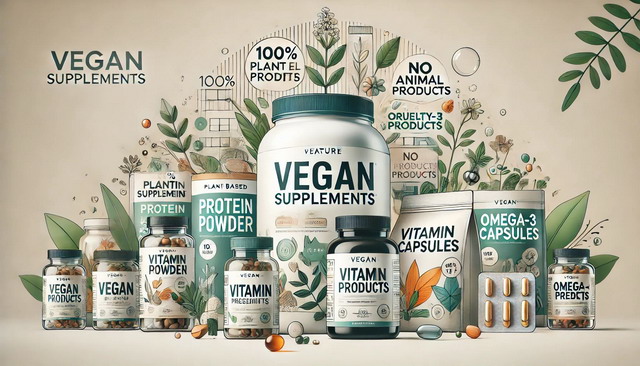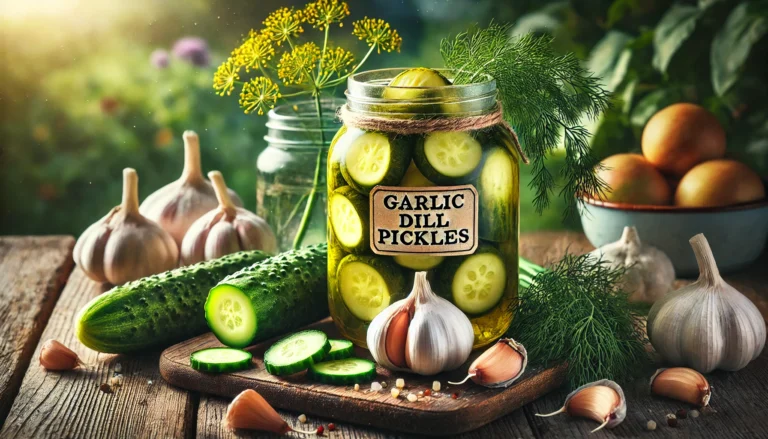As the world moves towards a more sustainable future, consumers are becoming increasingly aware of how their choices impact the environment. This growing consciousness is evident in the rise of plant-based diets and the booming vegan market, which is expected to continue its upward trajectory through 2025. But it’s not just the food on their plates that matters to today’s consumers—it’s how that food is packaged as well. Enter vegan-friendly food packaging, a trend that is gaining momentum alongside the plant-based revolution.
Vegan-friendly packaging is about more than avoiding animal-derived ingredients. It encompasses a broader commitment to sustainability, including the use of biodegradable, compostable, and recyclable materials. As brands recognize the need to reduce their environmental footprint, they are exploring innovative packaging solutions that align with the ethical values of their vegan consumers while addressing the global crisis of plastic pollution.
In 2025, vegan-friendly packaging will no longer be a niche concept but a crucial element for any food brand looking to meet the demands of eco-conscious shoppers. Whether through plant-based materials, reusable packaging, or minimalistic designs, the future of packaging is being reshaped to align with a more sustainable and vegan-friendly approach.
This article delves into the latest trends in vegan-friendly food packaging, exploring the innovative materials, designs, and regulations that will define the market in the coming years. From biodegradable alternatives to custom packaging that enhances brand identity, we’ll take a look at how companies can stay ahead of the curve and why embracing vegan packaging solutions is not just a trend, but a necessity for the future.
Best Vegan Food Packaging Alternatives for 2025
As the demand for plant-based foods continues to rise, a parallel shift is occurring in the world of packaging. Consumers are no longer just looking at the ingredients in their food—they’re also paying attention to how that food is packaged. The push for vegan-friendly food packaging is more than just a trend; it’s a reflection of a larger movement toward sustainability and environmental consciousness. As we head into 2025, it’s important for food brands to understand and adopt the best vegan packaging alternatives available.
Plant-Based and Biodegradable Materials
One of the most exciting developments in vegan food packaging is the growing use of plant-based and biodegradable materials. Traditional packaging, often made from plastic, is a significant environmental concern due to its long decomposition time and reliance on fossil fuels. In contrast, plant-based packaging offers an eco-friendly alternative. Materials such as cornstarch, bamboo, and sugarcane are now being transformed into biodegradable packaging options. These materials not only decompose faster but also align with the values of sustainability-conscious consumers.
For example, cornstarch packaging has gained traction as a renewable resource that is both compostable and cost-effective. It breaks down into non-toxic components, offering an excellent alternative for food brands that want to package their products responsibly. Similarly, sugarcane fiber (also known as bagasse) is another plant-based material making waves in the packaging industry. Derived from the waste left after extracting juice from sugarcane, this material is sturdy, compostable, and suitable for a range of food packaging applications.
Innovations in Compostable and Recyclable Packaging
Beyond plant-based materials, compostable and recyclable packaging options are also on the rise. Compostable packaging ensures that the packaging can break down in a composting environment, leaving behind no harmful residues. These materials are especially appealing for single-use packaging, as they offer a way to minimize waste even after use. Companies are exploring innovations in compostable films, trays, and even laminated materials that provide the necessary protection for food while remaining environmentally friendly.
In addition to compostable solutions, recyclable packaging remains a crucial option for reducing environmental impact. Unlike conventional plastic packaging, which often ends up in landfills, recyclable materials can be repurposed into new products. Many brands are incorporating post-consumer recycled (PCR) plastics into their packaging, contributing to a circular economy where materials are continually reused rather than discarded.
Case Studies: Leaders in Vegan Packaging
Several companies are already leading the way with innovative vegan packaging solutions. For instance, UK-based Notpla is a pioneer in creating seaweed-based packaging, which is fully biodegradable and compostable. Their products, ranging from food containers to water pods, are designed to dissolve naturally, reducing waste dramatically.
Another leader is TIPA, an Israeli startup producing compostable packaging that mimics the properties of conventional plastic. Their innovative packaging is not only vegan-friendly but also composts like organic waste, making it a game-changer for brands looking to reduce their environmental footprint.
As we move closer to 2025, it’s clear that the future of vegan food packaging lies in adopting these plant-based, biodegradable, and compostable materials. Brands that prioritize sustainable packaging will not only meet the growing consumer demand but also help shape a more eco-friendly food industry.
Eco-friendly Packaging Options for Vegan Food Brands
For vegan food brands, eco-friendly packaging is not just a choice—it’s an essential part of their identity. These brands are often built on principles of sustainability, and consumers expect them to extend these values to every aspect of their products, including how they are packaged. As consumer awareness grows, so does the demand for packaging that minimizes environmental harm. In 2025, the options for vegan food brands are more diverse and sustainable than ever.
The Importance of Plastic-free Packaging
Plastic pollution is a significant concern for environmentally conscious consumers, and vegan food brands are at the forefront of the movement to eliminate plastic from their packaging. Plastic, especially single-use plastic, is notorious for contributing to pollution and taking centuries to decompose. As a result, many vegan brands are seeking alternatives that are entirely plastic-free.
One of the most popular solutions is using paper-based packaging. Made from renewable resources, paper packaging is biodegradable, compostable, and easily recyclable. Innovations in paper technology have led to the development of more durable and moisture-resistant options, making it a viable alternative for packaging even perishable foods.
Some vegan brands are also experimenting with glass and metal packaging, both of which are highly recyclable. Glass jars, for instance, can be reused indefinitely, while aluminum cans are among the most recycled materials in the world. These plastic-free solutions help brands align with consumer expectations for sustainability while ensuring that their products remain protected and fresh.
Reusable and Zero-waste Packaging Solutions
In addition to plastic-free alternatives, vegan food brands are also embracing reusable and zero-waste packaging options. These solutions allow consumers to minimize waste by reusing the packaging multiple times before disposal. Brands offering products in refillable containers, for example, provide consumers with a way to reduce their overall packaging waste by refilling at stores or through subscription services.
One standout example is Loop, a global zero-waste shopping platform that partners with leading brands to offer products in durable, reusable packaging. Consumers receive their products in containers designed to be returned, cleaned, and refilled, significantly reducing packaging waste. This model is particularly appealing to vegan brands, whose customers are often looking for ways to minimize their environmental impact.
The rise of zero-waste and reusable packaging reflects a broader shift in consumer behavior toward sustainability. As we approach 2025, vegan brands that adopt these packaging options will not only reduce their environmental footprint but also enhance their appeal to eco-conscious consumers.
Biodegradable and Compostable Vegan Packaging Materials
As the packaging industry evolves toward eco-conscious solutions, the focus on biodegradable and compostable materials has intensified. For vegan food packaging, these options align perfectly with the ethical and environmental principles of veganism, making them an ideal choice for brands committed to sustainability. By 2025, biodegradable and compostable packaging materials are expected to become even more advanced and widespread.
Understanding Compostable vs. Biodegradable Packaging
While biodegradable and compostable packaging might sound similar, they have distinct differences that are important to understand. Biodegradable packaging is designed to break down into natural elements over time with the help of microorganisms. However, the speed and completeness of this process can vary depending on environmental conditions. Not all biodegradable materials are necessarily eco-friendly, as some may leave behind toxic residues.
Compostable packaging, on the other hand, breaks down into non-toxic, organic matter within a specific timeframe under composting conditions. These materials decompose faster and more completely than biodegradable alternatives, leaving behind nutrient-rich compost. For vegan food brands, compostable packaging is often the preferred choice because it offers a clear, end-of-life solution that aligns with their commitment to reducing environmental harm.
Best Vegan Cookbooks for 2025: Must-Have Recipes for Delicious Plant-Based Meals
Key Materials: Cornstarch, Sugarcane, and Mushroom-based Packaging
As brands seek to replace conventional plastic with plant-based alternatives, several materials have emerged as frontrunners in the world of biodegradable and compostable packaging. Cornstarch is one such material. Derived from corn, it is not only renewable but also highly versatile, making it suitable for a range of packaging needs, from containers to film wraps. Cornstarch packaging is both compostable and biodegradable, providing an excellent alternative for brands looking to minimize plastic use.
Sugarcane, particularly in the form of bagasse, is another plant-based material gaining popularity. Bagasse is the fibrous residue left after extracting juice from sugarcane, and it has proven to be an effective, durable packaging material. Products made from sugarcane bagasse are compostable and can be used in a variety of packaging applications, from food trays to clamshell containers. This material is not only eco-friendly but also helps repurpose agricultural waste.
One of the most innovative materials being explored for packaging is mushroom-based packaging. Grown from mycelium (the root structure of mushrooms), this packaging is fully compostable and offers a natural alternative to plastic foam. Mushroom-based packaging can be molded into various shapes and is ideal for protecting delicate products, making it a promising option for both food and non-food vegan products.
How to Source Sustainable Vegan Food Packaging Suppliers
Selecting the right packaging supplier is crucial for vegan food brands, as it directly impacts both product integrity and brand reputation. With the growing number of eco-friendly packaging options, it’s important for brands to understand what to look for when sourcing vegan packaging suppliers in 2025.
Factors to Consider When Selecting a Vegan Packaging Supplier
When choosing a sustainable packaging supplier, several key factors should be considered. First and foremost, the materials used must align with vegan values. This means avoiding animal-derived materials, such as gelatin or casein, which can sometimes be found in conventional packaging adhesives. Instead, brands should prioritize plant-based or mineral-based alternatives that meet both sustainability and vegan standards.
Additionally, the supplier’s commitment to environmental sustainability should be evaluated. This includes assessing their supply chain to ensure that the materials are sourced responsibly, with minimal environmental impact. Brands should look for suppliers that use renewable energy in their manufacturing processes, have efficient waste management practices, and offer products with certifications like “BPI Compostable” or “FSC Certified” for responsibly sourced materials.
Price and scalability are other crucial considerations. While sustainable packaging is often more expensive than conventional alternatives, suppliers that offer competitive pricing without compromising on environmental or ethical standards can be a game-changer for vegan brands. It’s also important to ensure that the supplier can scale production to meet the needs of a growing brand, especially as consumer demand for vegan products continues to rise.
Certifications and Eco-labels to Look for in Vegan-friendly Packaging
To verify that a packaging supplier meets vegan and sustainability standards, brands should look for specific certifications and eco-labels. For example, the Vegan Trademark ensures that the packaging contains no animal-derived ingredients and is produced without animal testing. Similarly, certifications like “BPI Compostable” (Biodegradable Products Institute) confirm that the packaging is compostable and meets industry standards for breaking down in a composting environment.
The “FSC Certified” (Forest Stewardship Council) label is also important for paper-based packaging, as it indicates that the wood used in the product comes from responsibly managed forests. These certifications not only assure brands of the ethical integrity of their packaging but also communicate to consumers that the packaging aligns with their values.
Examples of Vegan-friendly Suppliers and Manufacturers
Several suppliers and manufacturers have emerged as leaders in the vegan-friendly packaging space. Companies like EcoEnclose offer 100% recycled and recyclable packaging, specifically catering to eco-conscious brands. Another leader, World Centric, specializes in compostable packaging solutions made from materials like plant fibers, offering everything from cutlery to food containers.
Sourcing sustainable packaging is about more than just finding the right materials—it’s about forming partnerships with suppliers who share a commitment to ethical and eco-friendly practices. As we approach 2025, vegan brands that prioritize responsible sourcing will be better positioned to meet consumer expectations and lead the way in sustainable packaging.
Challenges and Opportunities in Vegan-friendly Packaging
While the move toward vegan-friendly packaging is exciting, it also comes with its own set of challenges and opportunities. As we head into 2025, brands need to be aware of both to successfully navigate this evolving landscape.
Overcoming Barriers to Wider Adoption of Sustainable Packaging
One of the most significant challenges facing vegan-friendly packaging is the cost. Sustainable materials often come with a higher price tag than conventional plastics, which can be a barrier for smaller brands or those operating on tight margins. However, as more companies adopt these materials and as technology advances, the cost of sustainable packaging is expected to decrease, making it more accessible for all brands.
Another challenge is consumer education. While awareness around plastic pollution and sustainability is growing, not all consumers understand the benefits of compostable or biodegradable packaging. Brands must invest in educating their customers about why vegan-friendly packaging matters and how to properly dispose of it. Clear labeling and communication will be crucial in overcoming this barrier.
Balancing Cost and Sustainability in Packaging Design
For many brands, finding the right balance between cost and sustainability can be difficult. While eco-friendly materials are increasingly available, not all of them are suitable for every product. Packaging needs to protect the product during transport, be shelf-stable, and meet regulatory requirements—all while being eco-friendly. Brands must carefully evaluate their packaging options and work with suppliers to find innovative solutions that meet both sustainability goals and practical needs.
Emerging Technologies Poised to Revolutionize Vegan Packaging
Despite these challenges, there are exciting opportunities on the horizon. Emerging technologies in materials science are set to revolutionize vegan-friendly packaging. For example, algae-based bioplastics and edible packaging are gaining traction as potential game-changers in the industry. These materials not only reduce waste but also offer innovative ways to package and deliver products.
As consumer demand for sustainable options grows, companies that invest in these emerging technologies will be well-positioned to lead the market. The next few years will likely see a wave of innovation that makes vegan-friendly packaging more effective, affordable, and accessible for brands of all sizes.
Top Plant-Based Meal Ideas for 2025: Fresh, Healthy Recipes to Try
Custom Vegan Packaging Design for Sustainable Brands
In an era where brand identity is often intertwined with values of sustainability, custom vegan packaging design is becoming a powerful tool for brands to stand out in the marketplace. Not only does it offer functionality and protection for products, but it also serves as a key aspect of storytelling—communicating a brand’s commitment to both veganism and the environment. As we approach 2025, more brands are exploring how creative, eco-friendly packaging can enhance their appeal to conscious consumers.
How Custom Packaging Enhances Brand Identity
Custom packaging gives brands the opportunity to align their values with their visual identity. For vegan brands, this means packaging that reflects ethical standards—no animal-derived materials, sustainable sourcing, and low environmental impact. These considerations go beyond aesthetics; they communicate a commitment to transparency and integrity.
A well-designed package can create a lasting impression, offering more than just a wrapper for a product. Take the minimalist designs used by brands like Who Gives A Crap or No Evil Foods. Their packaging does more than just protect their products; it reinforces the brand message. Packaging, in this case, is part of the product experience, resonating with consumers who prioritize environmental stewardship and ethical consumption.
By using materials like recycled cardboard, compostable inks, and plant-based adhesives, brands can further solidify their identity as leaders in sustainability. This level of detail shows consumers that the brand is walking the talk—providing not only vegan products but also ensuring that everything from the ingredients to the packaging is ethically sourced and eco-friendly.
Examples of Creative, Eco-friendly Packaging Designs
The rise of eco-friendly packaging has led to some truly innovative designs. Brands are rethinking the traditional packaging model to reduce waste, improve functionality, and offer a more sustainable alternative to conventional methods.
One standout example is Alter Eco’s compostable food wrappers. Made from eucalyptus and birch, the company’s packaging offers a solution to plastic while keeping their chocolates fresh. Another example is Notpla, whose seaweed-based packaging offers a biodegradable alternative to plastic in the form of edible and compostable pouches. These creative designs not only address the need for sustainability but also provide a unique selling point that differentiates brands in the market.
Brands are also exploring minimalist packaging, where less is more. By reducing the amount of packaging used, companies like Lush have managed to cut down on waste while maintaining a strong brand identity. Their iconic “naked” products come with little to no packaging at all, presenting consumers with a zero-waste option that is both visually appealing and aligned with their ethical standards.
Trends in Minimalistic and Functional Packaging Design for 2025
Looking ahead to 2025, minimalism and functionality will continue to drive trends in vegan packaging. As consumers become more environmentally conscious, they are gravitating toward brands that prioritize simplicity and sustainability. This means less clutter, fewer materials, and packaging that is easy to recycle, compost, or reuse.
Functional designs that serve multiple purposes are also gaining popularity. For example, packaging that can be repurposed after use—such as jars that can be used for storage or bags that serve as compostable liners—is a trend we expect to see more of in the future. Such designs reduce waste and add value to the product, encouraging consumers to engage with the brand even after the product is consumed.
Consumer Preferences for Vegan and Eco-conscious Packaging
As consumer awareness of sustainability grows, their preferences are shifting towards brands that prioritize eco-friendly packaging. In 2025, consumers are not just concerned about what’s inside the package but also how it is presented and disposed of. Vegan food brands must stay ahead of these changing preferences if they want to capture the hearts (and wallets) of this growing market.
How Consumer Behavior is Shaping Packaging Trends
The rise of eco-conscious consumers has been a game-changer for the packaging industry. More people than ever are actively seeking out products that minimize environmental impact, including those with vegan-friendly packaging. Studies show that consumers are increasingly willing to pay more for products with sustainable packaging, especially in the vegan and plant-based sectors.
This shift in behavior has driven the need for transparency. Consumers want to know that the packaging they are using aligns with their ethical values. This means brands are under pressure to clearly communicate how their packaging is made, how it should be disposed of, and what impact it has on the planet. Labels such as “compostable,” “recyclable,” and “plastic-free” are now seen as selling points that can make or break a purchasing decision.
Furthermore, younger generations—particularly Millennials and Gen Z—are leading the charge for change. These consumers tend to prioritize brands that reflect their personal values, and veganism, combined with eco-consciousness, is at the forefront of their lifestyle choices. Packaging that is perceived as wasteful or harmful to the environment is likely to alienate this demographic, making it essential for brands to embrace sustainable practices.
Insights into the Rise of Eco-conscious Consumers in 2025
By 2025, eco-consciousness will no longer be a niche concern. It is fast becoming a mainstream expectation, particularly in the food industry. Surveys show that consumers are not only more aware of the environmental impact of their purchasing decisions, but they are also holding companies accountable for their actions. They expect transparency from brands about their supply chain, the materials they use, and the sustainability of their packaging.
Eco-conscious consumers are also looking for packaging that fits into their lifestyle. This means packaging that is convenient, easy to dispose of, and integrates seamlessly with their recycling or composting habits. As more cities and communities adopt composting programs and reduce single-use plastic, consumers are demanding packaging that aligns with these local initiatives.
For vegan brands, the rise of this eco-conscious consumer base represents a massive opportunity. Those that can meet these demands with innovative, sustainable packaging will not only attract environmentally conscious shoppers but also foster long-term loyalty by aligning with their values.
How Brands Can Leverage Sustainable Packaging to Attract the Vegan Market
To successfully attract the vegan market, brands must view packaging as an extension of their product’s value. This starts with choosing materials that reflect both ethical and environmental integrity. By using biodegradable, compostable, or recyclable packaging, brands send a message that they care about more than just profit—they care about the planet and the future.
Clear and concise communication is key. Brands need to educate consumers about the benefits of their packaging and how to properly dispose of it. Whether through labeling, marketing campaigns, or in-store signage, helping consumers understand the environmental impact of their packaging choices can enhance their connection with the brand.
In addition, creating a seamless consumer experience is critical. Packaging that is easy to open, use, and dispose of can significantly enhance customer satisfaction. Brands that simplify the process of recycling or composting their packaging materials can win favor with the eco-conscious vegan market, leading to higher brand loyalty and customer retention.
Vegan Packaging Regulations and Compliance for 2025
As vegan-friendly and sustainable packaging becomes the norm, regulations and compliance standards are evolving to ensure that these materials meet specific environmental and ethical benchmarks. In 2025, brands must navigate an increasingly complex landscape of regulations to ensure their packaging meets legal requirements while aligning with consumer expectations.
Overview of Vegan Packaging Regulations by Region
Different regions have varying regulations concerning sustainable packaging. For example, the European Union’s “Single-Use Plastics Directive” aims to reduce the use of plastics, while also promoting biodegradable and compostable alternatives. Similarly, in the United States, cities and states are adopting plastic bag bans and implementing extended producer responsibility (EPR) programs that hold companies accountable for the end-of-life management of their packaging.
In countries like Canada, regulations are increasingly focused on reducing plastic waste, with a federal ban on certain single-use plastics set to take effect by 2025. This regulatory landscape requires brands to stay informed and ensure their packaging meets local laws, especially when selling in multiple regions.
Understanding Certifications like the Vegan Trademark for Packaging
Certifications like the Vegan Trademark have become essential for packaging in the vegan food industry. This globally recognized label confirms that packaging materials contain no animal products and are cruelty-free, providing reassurance to consumers who prioritize ethical consumption.
For compostable and biodegradable packaging, certifications like the Biodegradable Products Institute (BPI) label ensure that materials meet specific environmental standards for compostability. Brands using certified packaging can provide consumers with the confidence that their materials are safe for both home and industrial composting systems.
How Companies Can Stay Compliant While Promoting Sustainability
Staying compliant with packaging regulations while promoting sustainability requires brands to stay informed about changing laws and standards. This means working closely with suppliers who are knowledgeable about regulations and ensuring that all packaging materials used are appropriately certified. It also involves clear communication with consumers about the disposal and environmental impact of the packaging.
Brands that proactively adopt sustainable, compliant packaging not only avoid legal pitfalls but also gain a competitive advantage by meeting consumer demand for transparency and ethical business practices.
Conclusion: The Future of Vegan-friendly Food Packaging
The future of vegan-friendly food packaging is bright, with 2025 marking a pivotal year for the industry. As consumer demand for eco-friendly, plant-based products continues to grow, brands must rise to the challenge by adopting innovative packaging solutions that align with both sustainability goals and vegan values.
The journey to creating a more sustainable packaging ecosystem has already seen major strides in the development of biodegradable, compostable, and recyclable materials. Companies like Notpla and TIPA are proving that it’s possible to provide packaging alternatives that don’t compromise on performance or environmental responsibility. Meanwhile, emerging materials such as mycelium-based packaging and algae bioplastics offer exciting possibilities that could revolutionize the way we think about packaging in the years to come.
As this movement gains momentum, it’s clear that consumer expectations are driving much of the change. Today’s eco-conscious shoppers are not only concerned with what’s inside the package—they care deeply about the environmental impact of how it’s made and how it will be disposed of. This shift in priorities creates a massive opportunity for brands to differentiate themselves through sustainable packaging choices. By embracing vegan-friendly materials and ensuring that their packaging is easy to recycle, compost, or reuse, brands can cultivate lasting loyalty with their customers.
At the same time, the challenges that come with these innovations—such as balancing cost with sustainability, navigating evolving regulations, and educating consumers on proper disposal methods—will require thoughtful strategies. Brands that are proactive in overcoming these hurdles will be better positioned to lead the market. Partnering with certified suppliers, staying compliant with regional regulations, and investing in consumer education will be key to maintaining a competitive edge.
Looking forward, the packaging industry is poised for even greater innovation, driven by emerging technologies, consumer demand, and evolving environmental regulations. The rise of custom packaging designs that not only protect the product but also enhance the brand’s story is helping vegan brands create a unique identity in the market. Minimalistic and functional designs that reduce waste and offer practical solutions are further strengthening the movement toward zero-waste and sustainable lifestyles.
In conclusion, the future of vegan-friendly food packaging is shaped by sustainability, innovation, and consumer behavior. Brands that commit to eco-friendly packaging solutions now will not only meet the growing demand but will also contribute to the broader movement toward a greener, more sustainable planet. As we move toward 2025, one thing is clear: vegan-friendly packaging is no longer just an option; it’s becoming a necessity for forward-thinking brands that aim to make a positive impact on both the planet and the marketplace.
